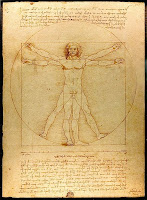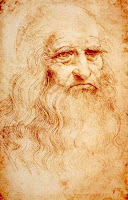
This evening I went to a lecture at the British Institute in Florence, An English Garden in Italy, Inventing the Aesthetic Renaissance Garden by Michael Liversidge. This was part of the Cultural Programme that the Institute puts on. Overall, I really enjoyed it, but boy did I feel like I was flunking at cultural literacy. Quick, describe the following:
· Garden of Eden in Venice
· Aesthetic movement
· Hypnerotomachia Poliphili
· Whistler (no, not the ski resort)
· Gertrude Jekyll
· Gordon Bennett
· Walter Pater
· Sissinghurst
If you got greater than four correct, excellent. I think I vaguely knew who Whistler was, but not the details of when he lived and what he did. So I flunked. I understood the talk well enough, but it took a bit of research on the Web later to really understand the subtleties. The main goal of the talk was to show how the Garden of Eden in Venice fit with the Aesthetic movement goals. Unstated, but I’ll conjecture since I put way too much research time in this, that the future of the garden as well (reverting back to nature) might be considered fitting as well with the movement.
Partial answers, i.e. the players in this story:
· Garden of Eden in Venice – A 9 or so acre garden in Venice (the Giudecca island to be exact) – which is amazing considering the size of Venice. It was and still is the largest private garden in Venice. It’s located here – though the satellite image really doesn’t reveal much. The garden took form at the end of the 19th century under the owners Frederick and Caroline Eden. Frederick Eden wrote the book A Garden in Venice originally published in 1903 describing the garden. The garden was a famous stopping spot for the intellectual jet set (who, it can be assumed, had more cultural literacy than I do). After the death of the owners, the garden passed through a series of different hands eventually being bought by the Austrian artist Friedensreich Hundertwasser (1928 – 2000) who let it go back to nature and it looks like that’s the way it will remain for now. Considering Hundertwasser’s goal of reconciling humans with nature I guess it makes some kind of sense.
· Aesthetic movement – a movement in literature and arts in the late 19th century Britain that emphasized mainly the sensual pleasure of art without any particular message: “art for art’s sake.”
· Hypnerotomachia Poliphili – a book published in 1499 and widely considered one of the most beautifully illustrated among incunabula (i.e. books printed before 1501).
· James Abbott McNeill Whistler (1834 – 1903) – an American-born, British-based artist who was part of the Aesthetic movement. You might be familiar with his painting Whistler’s Mother, 1871.
· Gertrude Jekyll (1843 – 1932) – a famous British garden designer. Her family name was used in the famous novella Dr. Jekyll and Mr. Hyde. Her sister, Caroline, was the wife of Frederick Eden – owners of the Garden of Eden in Venice.
· Gordon Bennett, Jr. (1841 – 1918) – a wealthy American newspaper publisher. It was said that he carried dairy cows on his yacht and one or more those cows ended up at the Garden of Eden in Venice. The Garden of Eden produced milk for a while (this statement sounds odd!).
· Walter Pater (1839 – 1894) – an English essayist and art and literary critic. His essays published in 1867-68 were important for setting the tone of the Aesthetic movement: live life intensely and follow ideals of beauty.
· Sissinghurst Castle Garden – an English garden created in the 1930s that represents a quintessential example of an English garden. The garden layout was influenced by Gertrude Jekyll (did you forgot who that was already?).




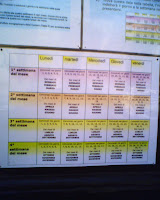



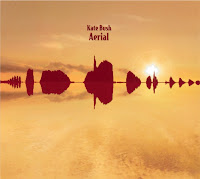





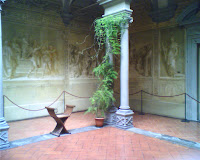























.JPG)










